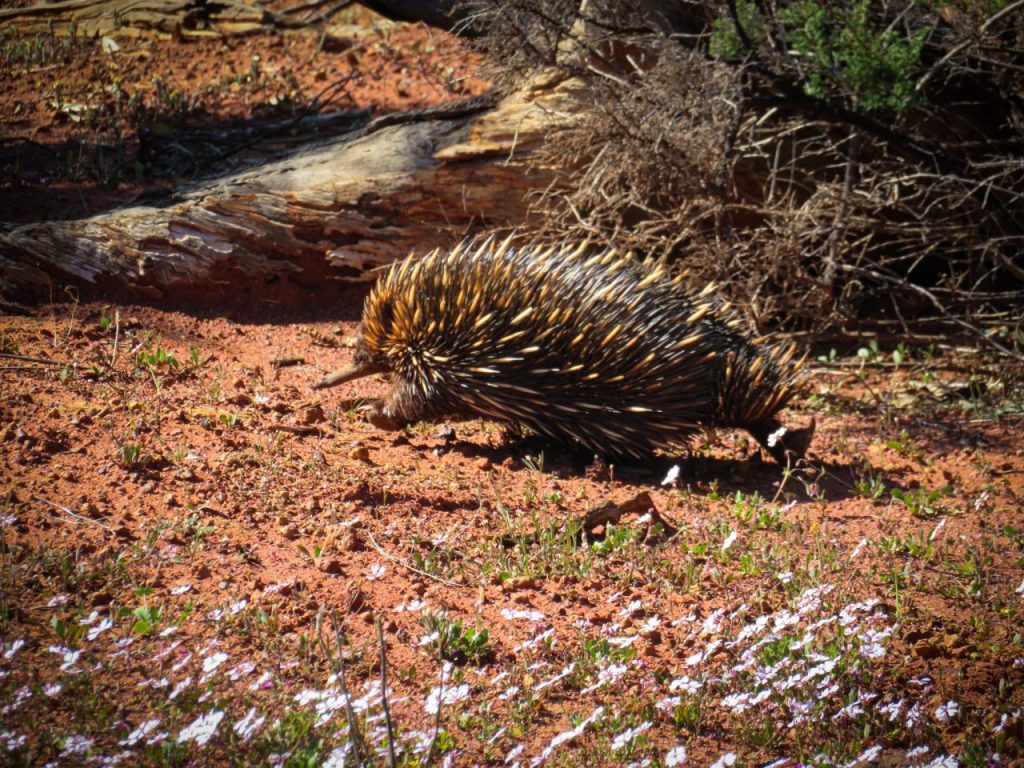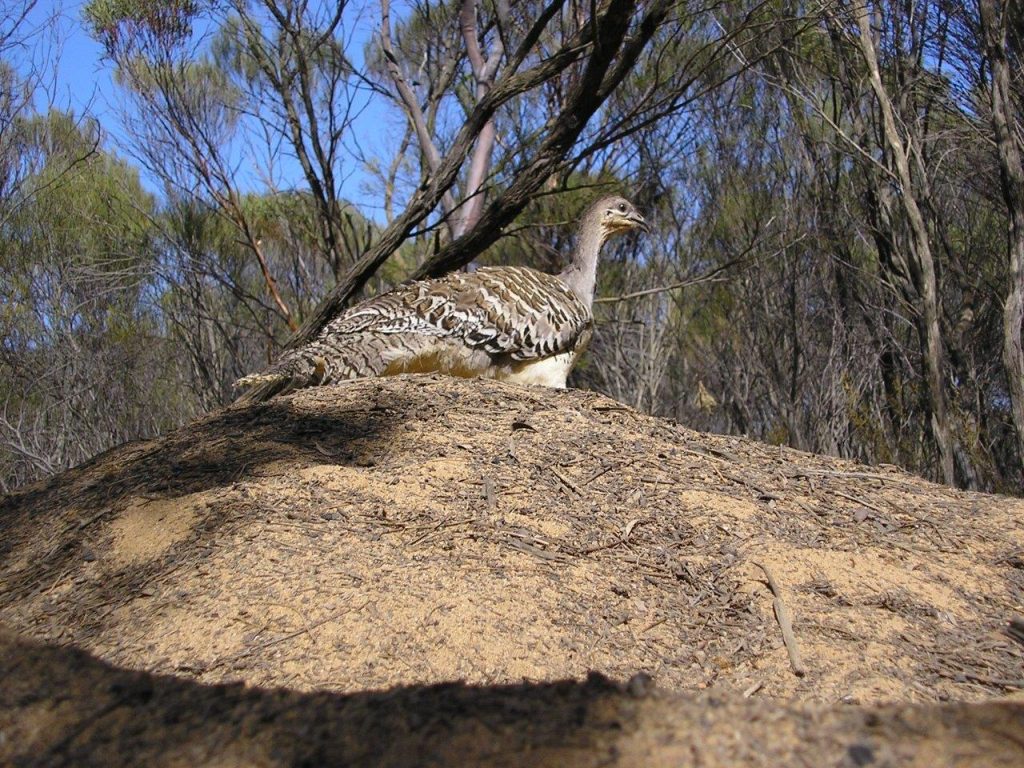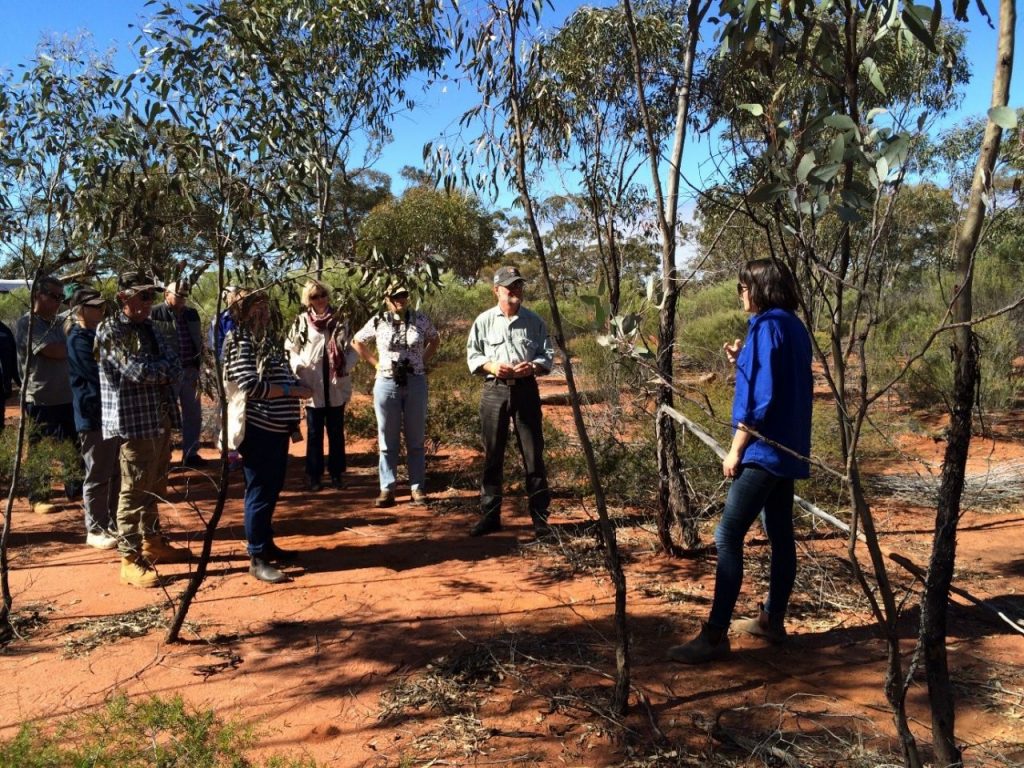About eight years ago, I stepped up to be the Chair. At the time I was the Reserve Manager at Charles Darwin Reserve. I wasn’t originally part of the design, it was all defined in the Ministerial Statement. All the policy and legislative work had already been done around Mount Gibson. If you are on a mine you gotta do all these things to offset it and this is one little part of that big list. It dawned on me that if we formed an association we would have access to this money, so we did.
In the beginning, I remember the meetings very clearly. I didn’t even know what we were doing. It was very much learning by doing and that’s what made it fun. The community members felt like they were a part of something new and exciting. The mining side felt a bit procedural, but we all knew this was bigger. Some struggled with giving the community trust, but the majority did.
It was like learning to dance with a new partner – it takes time for relationships to grow on both sides.
My vision for GRCA was to bring like-minded organisations together, especially those working and living in and around the Mount Gibson Mine, Perenjori, Paynes Find, Dalwallinu and Wubin – to collaborate on conservation projects. It was a chance to gather resources together and prioritise what we thought were necessary activities, including supporting young people in conservation; trying to coordinate larger research projects; and supporting like-minded groups also doing conservation work in the region. The funding wasn’t a huge amount, but we certainly got projects off the ground.
As the Chair, holding space for the committee meetings was set up to be inclusive, where everyone had a voice. Being a community-focused association, by its very nature needed to be relevant to the people living in this region and working in the environment or conservation area. I’ve learnt over the years that it’s far more effective to make sure people’s voices are heard and to try and work out the best course of action once you’ve listened and understood. Also, GRCA was in its infancy stage, if we didn’t create a space that genuinely showed interest in what people were trying to do in this unique landscape – you wouldn’t be able to engender any support. A lot of people work remotely in small teams, so it was good to get together with a variety of different people, often bringing in guest speakers or interesting presentations we could all share and take back to our more remote lives. Providing an inclusive space is critical, as it is very much how we bring people together and make the most of this money.
On the flip side, there were frustrating elements too. Community groups and the resource sector are an unnatural fit in most cases, they both have different drivers and different ways of doing things. Trying to find that balance between how a resource company needs to operate and ensure it’s beneficial for them, as opposed to how a community group works, is always challenging. Both parties understood that and we got to a point where there was mutual respect. The good thing was that GRCA didn’t try to reach beyond its capabilities. It may come and go because it does depend on the income from the mines in the area.
When they are producing there’s more income, when they’re not producing there’s zero income.
The local Governments, particularly the Shire of Perenjori, Paynes Find, Dalwallinu, and Morawa – were involved and saw it as a way to add value and depth to their sustainability program – another important part of its success. Once the mining companies understood what we were trying to do, they got behind it and were supportive of the initiative. GRCA started working quite closely with the Badimia Corporation, a great evolution. They had a really difficult period with the loss of their Native Title Claim, then they regrouped and GRCA was able to help with the Healthy Country Plan (HPC). The HCP is a big milestone for the Badimia Corporation, yet they need more support to get it kick-started and stabilised.
GRCA has shown that they can work well with mining companies, local Government, and Aboriginal, environmental and conservation groups across WA. There’s plenty of scope to bring in other resources, support research and continue to support great work and growth in this unique patch of the world. It was a great experience and something I’m proud to be part of. I look back on my time with the association very fondly.










